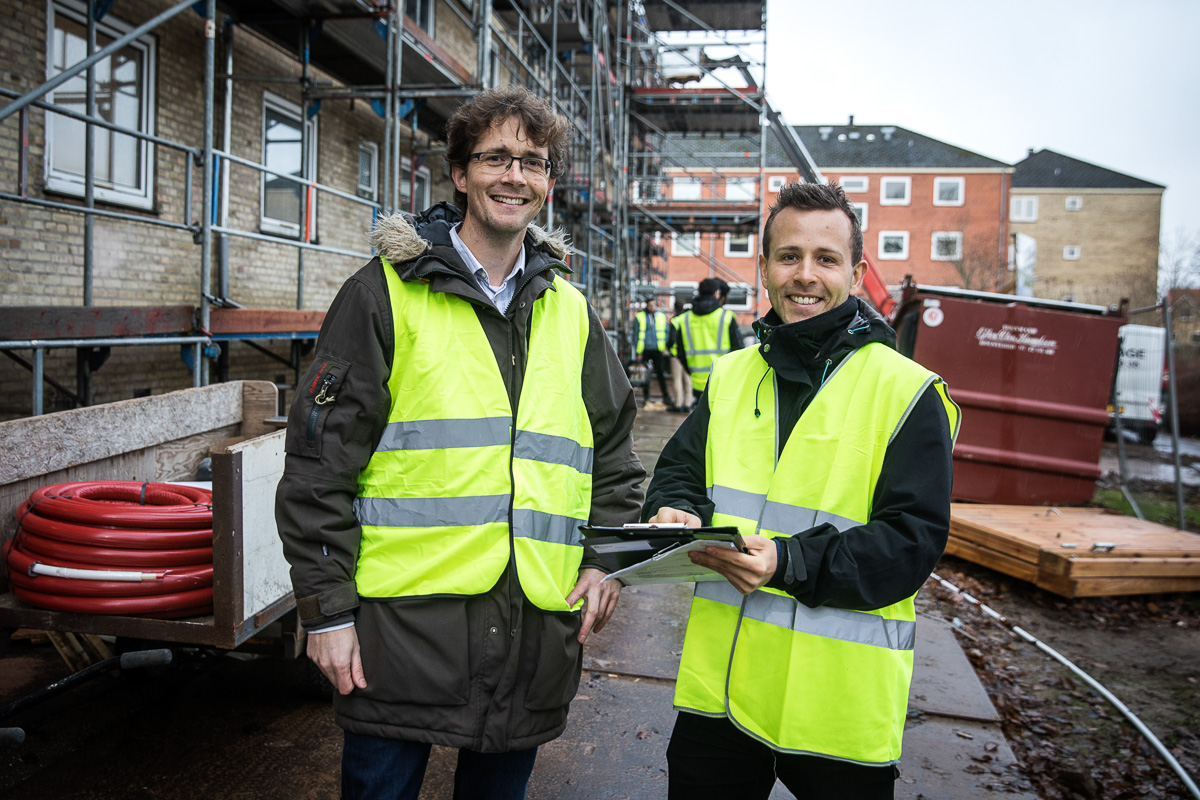Construction: How to turn 36 seconds into USD 5.4 billion
A team of researchers from Aarhus University have, for the first time ever, linked 40 years of productivity data from the construction industry with the actual work done. The results show that productivity in the construction industry has been declining since the 1970s. The results also explain the decline and how to achieve far more efficient construction in North America and Europe.

"This is a clear and cut business case and a helping hand for decision-makers in the construction industry: If the country's contractors are to make more money, they need to optimise processes."
This is how Hasse Neve, carpenter, MSc in Engineering, PhD and researcher in construction industry productivity at the Department of Engineering at Aarhus University, introduces the new study that, for the first time ever, links national productivity statistics in the construction industry with the efficiency of the actual work done on construction sites.
As it turns out, there is a statistically significant correlation between the two.
"Since 1972, we’ve continuously gotten less and less out of every hour of work. Construction sites have simply become less and less efficient because more time is spent on non-value adding work. Ultimately, this means that we spend more and more working hours on a single construction job. Therefore, our contractors do not earn as much money on construction as they could," says Hasse Neve.
The study has just been published in Journal of Construction Engineering and Management, one of the world's leading scientific journals for construction management.
Hasse Neve emphasises that it is primarily the construction management and not the builders who are responsible for and can influence how a building site operates, and thus how efficiently work is carried out. In general, everybody wants a good workflow and no waste:
"But to achieve this, the construction management team will need to use the right tools and competences and dedicate themselves to the task," he says and continues:
"The construction management team have the greatest influence on efficiency, and thereby on how much money is earned. And the way to increase efficiency is to use methods, tools and knowledge that already exist. Lean Construction tools are basically all about eliminating waste. It is therefore crucial that the construction management are trained in Lean Construction and that extra resources are added to both implementation and support throughout the project."
(The article continues below the picture)

Hasse Neve, PhD, engineer and carpenter, wants a more efficient construction process, where, among other things, time waste is reduced so work can be better carried out to the benefit of all parties. Photo: Ida Marie Jensen.
In the study, the research team used national productivity statistics from the construction industry and so-called work-sampling studies (observational studies of the work performed) from the US and Canada. The studies were carried out between 1972 and 2010. The reason that no Danish or European data were used is simply because not enough work-sampling studies have been completed in Denmark and Europe.
"Since the construction industry in North America isn’t too different from its European or Danish counterparts, there’s good reason to take these results seriously. If we’re going to change the productivity development of the Danish construction industry, we need to focus on efficiency on construction sites,” says Hasse Neve.
To illustrate the value that the construction industry could generate if more time was spent on value-adding work, Hasse has calculated what just 36 more seconds per hour (for builders) spent on generating value could mean for the construction industry’s gross domestic product in the US and Canada: 5.4 billion dollars annually (approx. DKK 36 billion).
"Although there is a degree of uncertainty, this shows what a society could earn by simply spending one percentage point more time on value-adding work on construction sites. But the vast majority of sites can be optimised even more, thus the numbers could be huge," he says and continues:
"The results are of course based on North American data, but there is no doubt that the potential for the Danish construction industry is also significant. And that’s a really fantastic thought. We have lots of tools and knowledge that can make construction processes far more efficient, so why not use them? Fundamentally, construction is about generating value. A good final product for the client and users, and an efficient process for contractors, so they can earn money.
And if you are unsure about how to get started?
"Then just call me," says the researcher with a smile.
Professor Søren Wandahl
Mail: swa@eng.au.dk
Tel.: +4541893216
